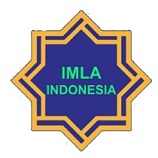KONFLIK SUNNI-SYIAH DI TIMUR TENGAH PERSPEKTIF GEOPOLITIK DAN DAMPAKNYA TERHADAP HUBUNGAN SUNNI-SYIAH DI INDONESIA
Abstract
Since the Iranian Islamic Revolution in 1979, Sunni sentiments with Shia have been redistributed everywhere. Even though the Sunni-Shia sentiment is not the main source of conflict but political geography, which is related to borders and natural resources. Because, the Middle East is located in a strategic area so that it becomes a very important region in the global political map. Conflicts that are inseparable from Sunni-Shia sentiments in the Middle East include: Shiite Sunni conflict in the Gulf War, attacks on the commemoration of Ashura (Karbala Massacre), Shiite Sunni conflicts in Syria and Lebanon, and Shia Sunni conflicts in the Yemeni Civil War. This conflict has a huge impact on Shia Sunni relations in Indonesia. The impact of the conflict was the occurrence of Sunni Shia conflict in Indonesia, which included: the attack on the Shia Islamic Boarding School, the dissolution of the commemoration of the Ashura tradition, the dissolution of the anniversary of Fatimah Az-Zahra, the ban on the Rausyan Fikr Foundation in Yogyakarta, and the attack on the Shia community in Madura. This paper attempts to examine the impact of the Shia Sunni conflict from a Geopolitical perspective and the impact of the conflict on Sunni- Shia relations in Indonesia.
Keywords
Full Text:
PDFDOI: https://doi.org/10.20961/cmes.12.2.37890
Refbacks
- There are currently no refbacks.
Copyright (c) 2019 Jurnal CMES

This work is licensed under a Creative Commons Attribution-ShareAlike 4.0 International License.
| Copyright of CMES ISSN 2085-563X (print) and ISSN 2502-1044 (online) CMES Journal is licensed under a Creative Commons Attribution-ShareAlike 4.0 International License. | CMES (Center of Middle Eastern Studies) Print ISSN: 2085-563X Online ISSN: 2502-1044 Website: https://jurnal.uns.ac.id/cmes/index Email: cmes@mail.uns.ac.id Published by: Universitas Sebelas Maret Office: Department of Arabic Literature, Faculty of Cultural Science, Universitas Sebelas Maret Ir. Sutami Street, No. 36A, Surakarta, Jawa Tengah 57126 Phone: +62 822-4000-2313 |















